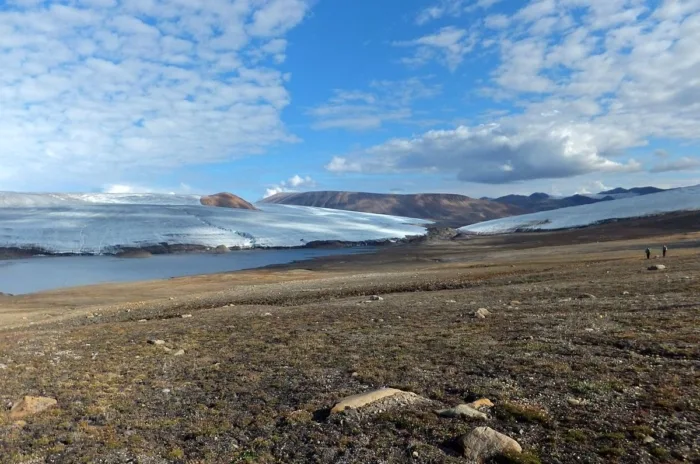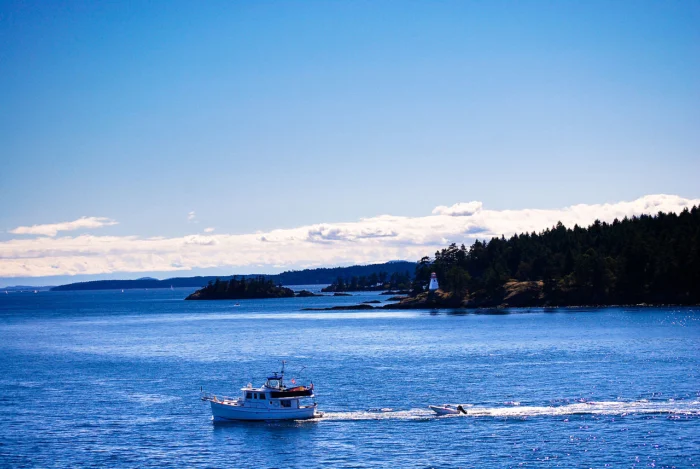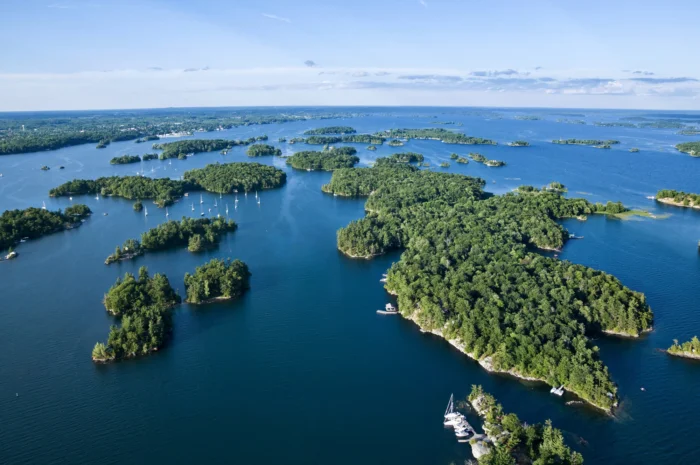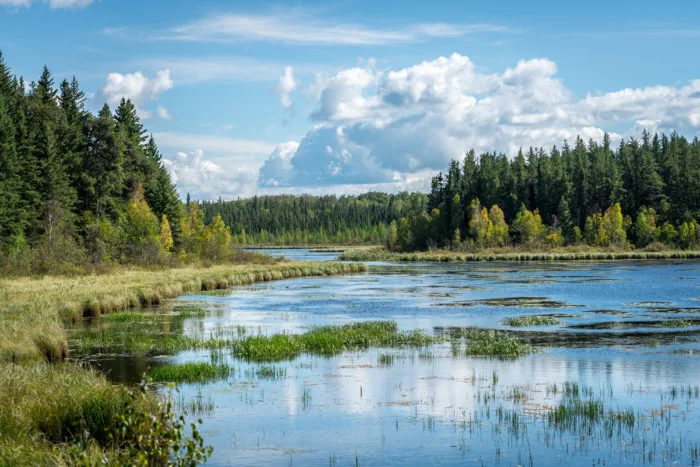Canada is one of the most picturesque countries in the world. Most of the population lives in large cities along the US border. The rest of the territory is sparsely populated. Only 10% of the state's population lives in central and northern Canada. Therefore, the human impact on nature is minimized there. Due to close cooperation with the United States, there are not many industrial enterprises here - it is more profitable to build them closer to the border.
The Government of Canada recognizes the value of North American nature. Therefore, a large number of nature reserves and national parks have been created here. They preserve rare species of plants and animals, maintain unique ecosystems. Millions of tourists visit Canada's natural attractions every year. They are attracted by picturesque forests, waterfalls and glaciers.
The best nature reserves and national parks in Canada
1. Banff National Park
The most visited national park in Canada is located in the north of the country. The area of the park is over 6600 km². The park's Rocky Mountain area is home to many glaciers, lakes and coniferous forests. There are camping and mountaineering points, a ski resort is organized. Due to frequent traffic and a large highway that runs through Banff, the environmental situation in the park has deteriorated over the past few years.
 |
| Banff National Park |
2. Vuntut National Park
In the north of the Yukon, in the northern part of the Old Crow Plain, flat lakes are spread over a huge area. They were formed after the melting of the glacier, which smoothed out all the unevenness of the relief. The land belongs to the Indian community of Vuntut Gwitchin, in whose territory there is a hundred thousandth population of caribou deer, and hundreds of thousands of birds nest on the lakes every year.
 |
| Vuntut National Park |
3. Gwaii Haanas National Park Reserve
Moresby Island is located not far from the Pacific coast. The southern part of the island and small islets nearby belong to the Gwaii Haanas Park Reservation. The main area of the park is occupied by the San Cristoval mountain range. There are many fjords and bays along the coast of the island, and more birds of prey nest in the mountains and forests than anywhere else in Canada.
 |
| Gwaii Haanas National Park Reserve |
4. Ivvavik National Park
The park is located on the coast of the Beaufort Sea and borders on Vuntut Park. The British Mountains and the Firth River are the backbone of Ivwavik. Most of the park is occupied by tundra. The most common here are northern dwarf trees: pines, spruces or balsamic poplars. In the north, due to the winds from the ocean, fog and rain are frequent. In the south, on the contrary, there is a warmer and drier climate.
 |
| Ivvavik National Park |
5. Quttinirpaaq National Park
Canada's second largest and northernmost national park is located just 750 kilometers from the North Pole. Quttinirpaaq National Park includes the entire island of Ellesmere and the surrounding waters. The area of the park is almost 38,000 km²; it is planned to include another island in the protected area. In the conditions of the harsh Arctic climate, a unique ecosystem has developed here. The island is home to caribou deer, musk oxen, island wolves and many other polar species.
 |
| Quttinirpaaq National Park |
6. Wood Buffalo National Park of Canada
The largest national park in Canada is located between the Athabasca and the Big Slave Lakes. Over 44,000 km² of forests, prairies and valleys. Wood Buffalo is famous for having the largest herd of wild American bison on the continent. In the national park, their population is about 2,500. It is also home to the world's largest river delta. It is formed by the Athabasca and Peace River rivers.
 |
| Wood Buffalo National Park of Canada |
7. Gros Morne National Park Of Canada
On the island of Newfoundland, the displacement of the continental plates can be traced. Due to the movement of tectonic plates in the earth's crust, a fault formed here and molten rocks came to the surface. The Gros Morne Park is home to a large number of fjords, mountain plateaus, waterfalls and glaciers.
 |
| Gros Morne National Park Of Canada |
8. Jasper National Park
In the national park on the eastern side of the Cordillera, there is the Athabasca Glacier, which is the oldest in the world. Its age, according to various estimates, is about 10 thousand years. Jasper Park is one of the most popular parks among tourists. There are ski slopes, golf courses and many hotels.
 |
| Jasper National Park |
9. Yoho National Park Of Canada
The park is located in the south of Canada and was founded in 1886. Yoho is located in the Rocky Mountains. Here, numerous lakes and waterfalls coexist with alpine glaciers. In Yoho Park, melt water from glaciers has carved many limestone canyons and caves. A large number of prehistoric fossils have been found in them.
 |
| Yoho National Park Of Canada |
10. Kluane National Park and Reserve
In the southwestern part of the Yukon, close to the Alaska border, Lake Kluane is located. It gave the name to the park reservation. Logan, Canada's tallest mountain, is located here. The Cordilleras shape Kluane's climate in many ways. They prevent the passage of air masses from the ocean, so most of the park is located in the continental climate zone.
 |
| Kluane National Park and Reserve |
11. Kootenay National Park
The park's motto "from cacti to glaciers" expresses the variety of landforms, flora and fauna on its territory. Kootenay is located in southeastern British Columbia. Part of the park is occupied by a mountain depression between the Rocky Mountains and the Columbia Mountains. There are both cold and hot springs.
 |
| Kootenay National Park |
12. Nahanni National Park Reserve of Canada
The park is located in the southern part of the Mackenzie Mountains, in the South Nahanni River Valley. On this river, in Nahanni Park, there is Virginia Falls, over 90 meters high, and a cascade of canyons. There are many geothermal springs in Nahanni. Expansion of the park to 30,000 km² is planned, making it one of the largest in Canada.
 |
| Nahanni National Park Reserve of Canada |
13. Waterton Lakes National Park of Canada
Due to the variety of terrain, the national park in the southwest of Alberta is home to many natural areas. On 505 km² subalpine forests, tundra, prairies, lakes and swamps are combined. The entire park is located at an altitude of over 1200 meters above sea level. Lake Upper Waterton, in the park, is the deepest body of water in the Rocky Mountains.
 |
| Waterton Lakes National Park of Canada |
14. Saguenay-St-Lawrence Marine Park
The Marine Park is located in the southeast of the province of Quebec. It includes maritime and coastal areas as well as the estuaries of the Saguenay and St. Lawrence rivers. Rare sturgeon species are found in the rivers of the park. Several species of whales, beluga, sea seals and porpoises live in the ocean area. It is planned to include the Saguenay fjord in the national park.
 |
| Saguenay-St-Lawrence Marine Park |
15. Gulf Islands National Park Reserve
Between Vancouver Island and mainland Canada, there are many small islands that make up an entire archipelago. Part of these islets are the Gulf Islands Park Reservation. It is home to 15 endangered animal species. Porpoises, sea lions, killer whales and seals live in the water area of the park thanks to the coastal current, which rises from the bottom of cold water rich in mineral salts.
 |
| Gulf Islands National Park Reserve |
16. Pacific Rim National Park Reserve
The park includes the Vancouver Island coastline, beach and coastal waters. Throughout the year, abundant rains fall in the coniferous forests on the coast, and the temperature remains stable. The coastal water area is rich in fish and shellfish, and a large number of coniferous tree species grow in the forests. The park organizes excursions to the Broken Group Islands, and conducts individual kayaking.
 |
| Pacific Rim National Park Reserve |
17. Glacier National Park of Canada
The main task of the park is to protect and preserve the nature of the Columbia mountains. More than 10% of the park's area is occupied by glaciers; at the foot of the mountain ranges there are zones of humid forests. At high altitudes, heather fields are widespread, and even higher, mainly lichens grow. Glacier Park is crossed by the Trans-Canadian Highway and the Canadian Pacific Railroad, passing through Rogers Pass. It is recognized as a National Historic Site of Canada.
 |
| Glacier National Park of Canada |
18. Grasslands National Park
In the province of Saskatchewan in 1981, a national park was created, the purpose of which was to preserve the nature of the Canadian prairies. On the territory of Grasslands Park, many ancient sites of Indians, more than 10,000 years old, who lived on the prairie thanks to the bison hunting, have been discovered. By the end of the 19th century, bison on the local prairies were completely exterminated, but since 2005, a program has been underway to restore the population - 60 individuals were brought from the United States.
 |
| Grasslands National Park |
19. Auyuittuq National Park
Almost 20,000 km² is set aside for a national park on Baffin Land. Auyuittuqk is crossed by the Arctic Cordillera mountain range, and the most famous site of the park is Penny Ice, completely covered with snow and ice. Its area is over 6000 km². Auyuittuq maintains rare arctic and subarctic ecosystems that are being disrupted by human activities and climate change.
 |
| Auyuittuq National Park |
20. Bruce Peninsula National Park
About 400 million years ago, there was a sea in the place of the Great Lakes and surrounding territories. Later, the sea level became much lower, due to which picturesque dolomite rocks and cliffs were formed here, carved over the years. If Bruce is located on the shores of the Great Lakes, then their water area and islands belong to the Fathom Five Park. Often, excursions are conducted here to both national parks at once.
 |
| Bruce Peninsula National Park |
21. Wapusk National Park
Despite the remoteness from the North Pole, an extremely cold Arctic climate has developed on the coast of Hudson Bay. Even in summer, the temperature can drop sharply here, so the local flora and fauna exist in extreme conditions. The Inuit and Cree tribes have lived in this climate for thousands of years. Nowadays, on the territory of Wapusk Park, they are allocated territories near York Factory and the Prince of Wales Fort.
 |
| Wapusk National Park |
22. Prince Edward Island National Park
The park is based on the northern coast of the island of the same name. The main local attraction, for the protection of which the protected area was created, are the sand dunes of the coast. It is preserved thanks to the sand-lover grass, which holds the sand with its root system. It is being trampled, so special paths for visitors have been laid on the coast of the national park.
 |
| Prince Edward Island National Park |
23. Fundy National Park Of Canada
In the park, in the province of New Brunswick, there are more than 20 waterfalls. The height of the tides here reaches 9 meters. This is one of the highest rates in the world. Not far from the park, in another part of the Bay of Fundy, it is planned to build tidal power plants. In terms of hydropower, Fundy is one of the most promising places on the planet.
 |
| Fundy National Park Of Canada |
24. Torngat Mountains National Park
In the province of Newfoundland, along the Torngat mountain range, the national park of the same name is located. It is the largest on the Atlantic coast - the area of the Torngat Mountains is 9,700 km². At the foot of the park's mountains, there are many bears, caribou deer, hares and polar foxes. And on the peaks, birds of prey such as falcons or golden eagles nest.
 |
| Torngat Mountains National Park |
25. Cape Breton Highlands National Park
The park is located in the province of Nova Scotia, on the Atlantic coast. Most of the territory is occupied by the Cape Breton mountain plateau, on which many rivers flow. There are a large number of acid lakes in the east of the park. They were formed by a glacier thousands of years ago and have become a popular tourist attraction these days. A large number of plant species from different climatic zones grow here. About 100 species were artificially introduced by humans.
 |
| Cape Breton Highlands National Park |
26. Mount Revelstoke National Park
The national park was founded in 1914, thanks to the large number of tourists visiting southeast British Columbia. Later, one of the first Canadian ski slopes was equipped here. The local coniferous forests are composed mainly of fir and hemlock and are characterized by extremely high humidity. Most of the precipitation falls in the form of rains, and snow from mountain peaks melts and also moistens forest soils.
 |
| Mount Revelstoke National Park |
27. Georgian Bay Islands National Park
In Ontario, a unique ecosystem has formed in the Georgian Bay. It is inhabited by species characteristic of both the arctic desert zone and the temperate climatic zone. Also on the islands of the Georgian Bay Islands, traces of the presence of people in antiquity are often found. The oldest finds are 7,000 years old. Archaeologists regularly stumble upon new household items and remains of ancient people's dwellings.
 |
| Georgian Bay Islands National Park |
28. Mingan Archipelago National Park Reserve
The park includes a number of limestone and granite islands in the Gulf of St. Lawrence. The unique natural landscape was formed during the melting of the glacier. The islands sank under the water, after which the water level dropped. Sea currents carved many grottoes and caves in the rocks, and the islands rose above the ocean. For their preservation, a national park was created. Also on the territory of the archipelago, a large number of fossils left by the glacier and of high archaeological value were discovered.
 |
| Mingan Archipelago National Park Reserve |
29. Sable Island National Park Reserve
Sable Island is located in the Atlantic Ocean off the east coast of Canada. It is a curved sand spit 1-1.3 kilometers wide. The island is an important migration point for many bird species, and long-snouted seals breed here every year. In addition, Sable Island is home to unique species of insects. The ecosystem is under threat due to the possibility of blowing and washing away the sand dunes located across most of the island.
 |
| Sable Island National Park Reserve |
30. Prince Albert National Park
The park is located in the province of Saskatchewan, in central Canada. The main attractions of the park are associated with the history of various Indian tribes who have lived here for the past 8000 years. One of them is the House-Museum of the Gray Owl, whose real name is Archibald Bilaney. Living on the island among the Indians, he wrote novels and essays about nature and the people of Canada. The park is also famous for its rich fauna - it is home to many species of birds and the second population of American bison in Canada.
 |
| Prince Albert National Park |